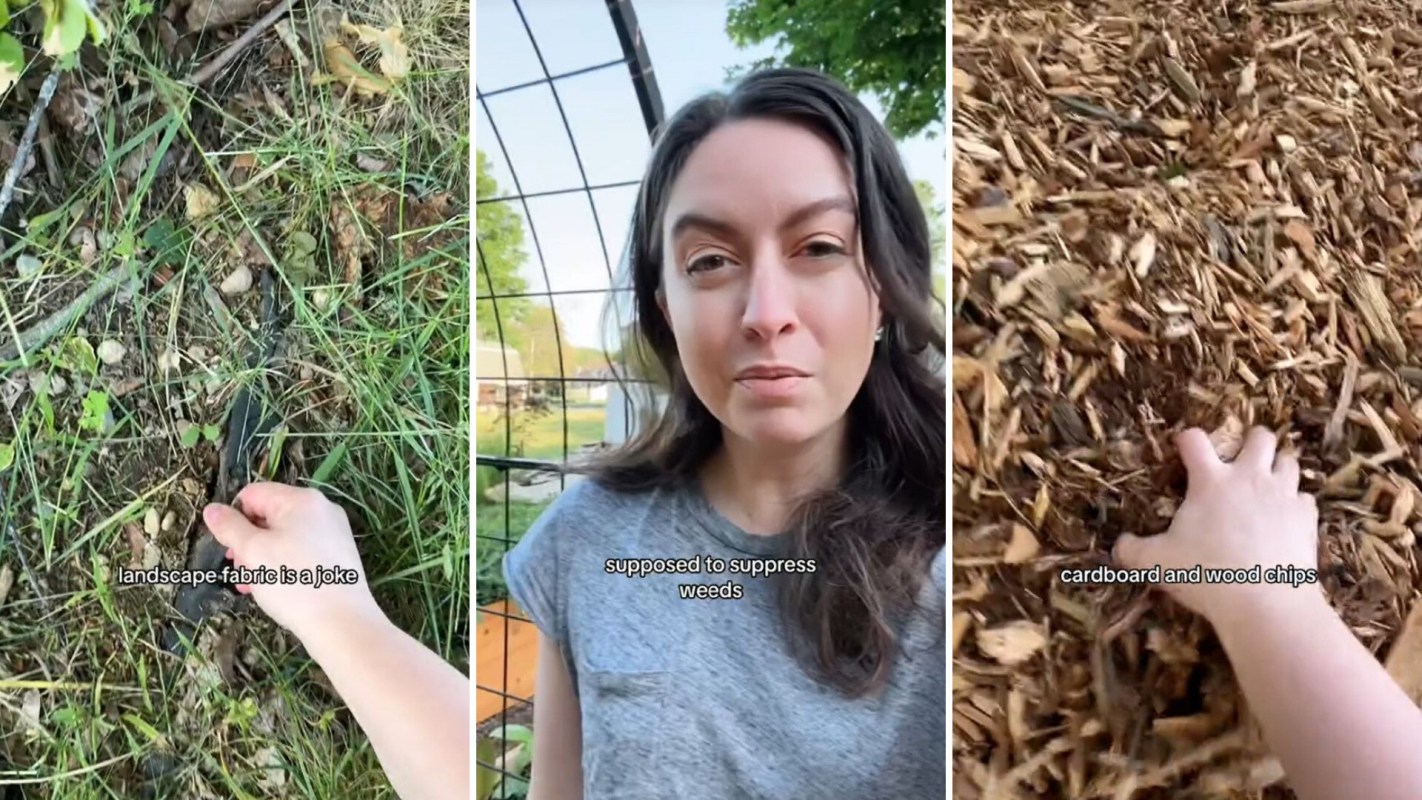One gardener found something she finds completely despicable buried in her backyard and took to TikTok to open up about it.
"Landscape fabric is a joke," TikToker The Cottage Peach (@thecottagepeach) said in a popular video. "It doesn't even work the way it's supposed to."
The scoop
As she pulled at the torn black cloth in her yard, the TikToker explained that while the fabric is supposed to suppress weeds, "all it actually does is prevent water and nutrients from reaching the soil, leach microplastics and make the soil more compacted."
Her solution? Using cardboard and wood chips instead — which she called a natural alternative "without all these issues."
@thecottagepeach This stuff doesn't even work and you'll just end up with more problems than you started with if you use it 😩 the patch I found here is from before we lived here, so it's over 23 years old 😳 #gardeningday #gardeningproblems #gardeningtools #gardenweeds #gardenmistakes #beginnergardeningtips ♬ original sound - The Cottage Peach
How it's helping
While wood chips come with a cost (unless you sign up for a service like ChipDrop, which is free), this hack will ultimately save you cash on landscape fabric, which, according to one Dallas-area gardener, is a "total waste of money."
Landscape fabric increases soil temperature, blocks the proper exchange of oxygen and carbon dioxide, restricts the movement of soil-mixing garden friends like earthworms, and more. Plus, it compacts surface soil, damaging its ecology.
Landscape fabrics are generally made out of plastic. As the sheets decompose, they turn into microplastic particles that can pollute the soil and take hundreds or thousands of years to break down completely, making their way into streams, rivers, and even the ocean, causing harm to animal life every step of the way.
These tiny plastic particles can also be immediately problematic to your health if you're growing edible plants. Crops mostly absorb nanoplastic particles (even smaller versions of microplastics) through their roots, so the biggest concern would be for root vegetables like carrots, radishes, and turnips.
On the other hand, cardboard does not interfere with ecological processes. It even breaks down over time and is eaten up by earthworms. While cardboard may contain chemicals in the form of glue, these glues are generally derived from starches found in plants like rice and potatoes and are safe to use in your garden.
What everyone's saying
Overall, people were pretty enthusiastic about the cardboard and wood chip hack, with one commenting, "Oh man. I wish I would have known this sooner."
Many commenters lamented about inheriting a landscape fabric mess when they moved into their homes. One said, "The previous owner of my house lined the entire yard with plastic. It's been a nightmare."
The cardboard and wood chip method doesn't come without its controversies among gardeners. You can get info on the pros and cons of this method, along with more detailed instructions.
Join our free newsletter for easy tips to save more, waste less, and help yourself while helping the planet.









